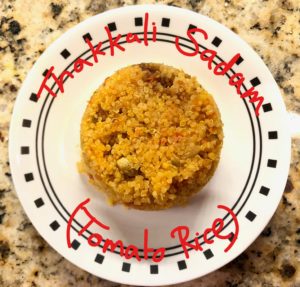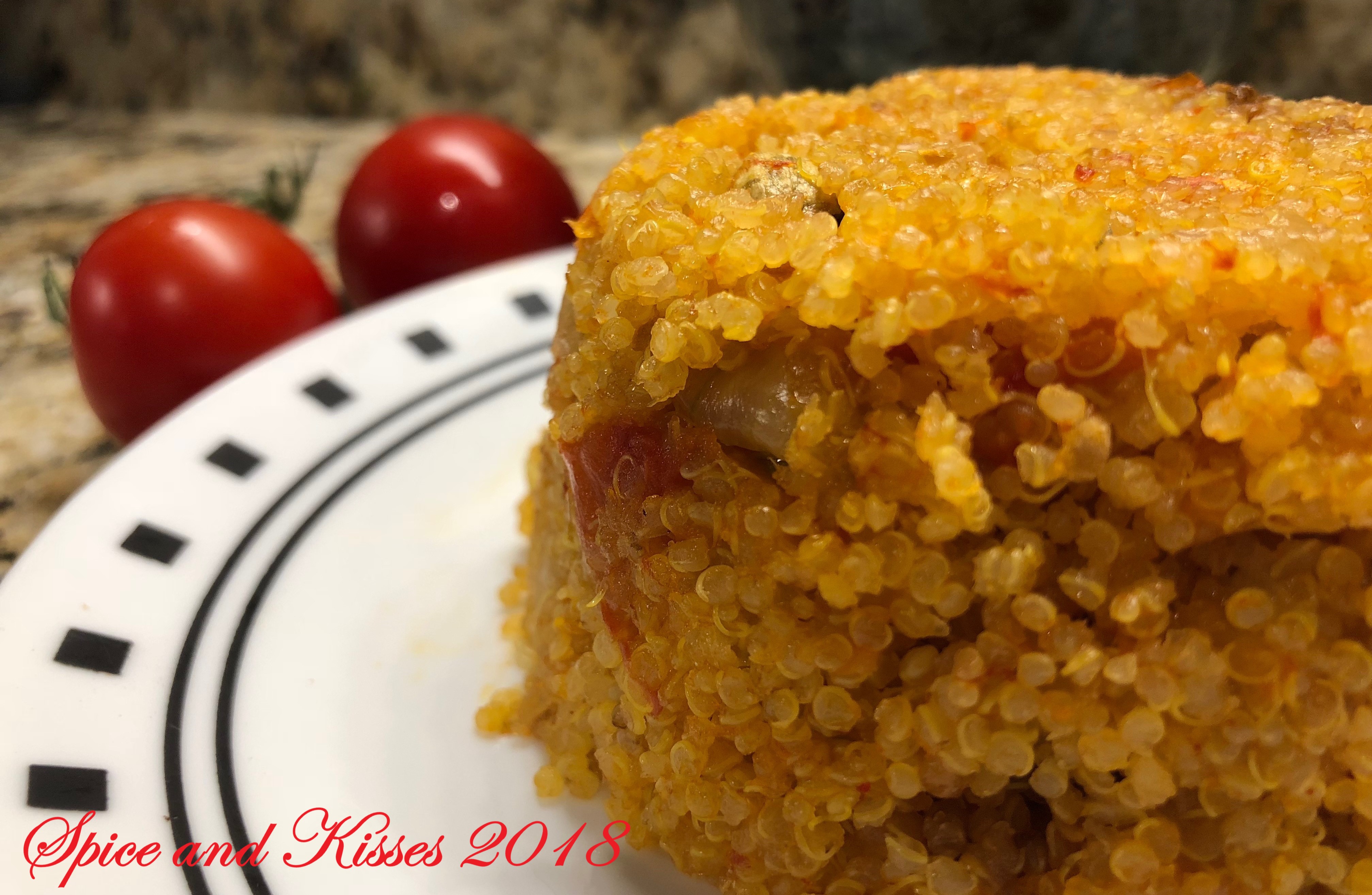
Even though I filed this recipe from my mother under South Indian, I also tagged it as fusion. Mostly, this is because I often substitute in quinoa in place of the more traditional white rice, as demonstrated by the photos. However I would like to point out that Thakkali Sadam itself, even when using rice, is an old example of fusion cuisine to begin with. Two key ingredients for tomato rice—tomatoes and chili—both originally hail from the New World. This dish didn’t exist in India before the time of Columbus. Which goes to show that the food we call fusion today may be called traditional a century from now. Imagine Italy without tomatoes, Ireland without potatoes, South and Southeast Asia without chili peppers. (I can’t.). Cuisine, and culture, both evolve constantly.



Growing up, I often ate thakkali sadam as a stand-alone dish, usually accompanied by pachadi (seasoned yogurt, also known as raita). Though tasty enough to stand on its own, this moist, tart, and gently aromatic dish pairs well with many other flavors. As a result, nowadays I like to serve it as a side with seafood or poultry dishes that don’t come with lots of gravy or curry of their own.
Recipe Notes:
- I toned down the heat in this recipe so that it wouldn’t be too spicy for Ajay—for a spicier dish, increase the chili powder to ½ tsp (or more, but that’s probably a good starting point for most people).
- These directions are for pressure cookers, but it can also be made in an Instapot or an electric rice cooker that has a sauté setting. Or the recipe can (despite its name) be made in two pots, using a large skillet or frying pan for steps 1-4 and then adding the resulting soup and the appropriate amount of water directly to whatever vessel/method you use to cook your grain.
One-Pot Thakkali Sadam (Tomato Rice)
Ingredients
- 6 medium-large tomatoes, diced
- 1 large onion, diced
- 2 cloves garlic, minced
- ½ tablespoon grated ginger
- 1 cinnamon stick
- 2 whole dried bay leaves
- 4 green cardamom pods, roughly crushed so that the pods split open but do not fragment
- ¼ tsp fennel seed
- ¼ tsp red chili powder
- ¼ tsp turmeric powder
- ½ tbsp salt
- 2 tbsp butter
- 2 tbsp vegetable oil
- 2 cups rice (or quinoa, or other grain that cooks similarly to rice)
- 2-3 cups water
Instructions
- In your grain cooking vessel of choice (see recipe notes), melt 2 tbsp butter and 2 tbsp vegetable oil together on medium heat.
- Once the butter melts, add the onion, garlic, ginger, cinnamon stick, bay leaves, cardamom pods (both seeds and husks), and fennel seed. Stir periodically for a few minutes until the onions are just beginning to become translucent.
- Add tomato, chili powder, turmeric powder, and salt to pot. Stir to mix well with the onion and other spices. Bring to a simmer.
- Let everything simmer until the tomatoes are cooked—the skin will begin to separate from the fleshy part of the tomato and the mixture will look more (although far from completely) homogenous. Stir periodically to make sure the bottom of the mixture does not burn.
- Add the grain and two cups of water. If the tomatoes simmered for a very long time, and the mixture looks dry before adding the water, you may need to add a third cup of water. When pressure cooking rice or quinoa, I use two cups of liquid for every cup of grain, so I try to make sure the total amount of liquid (tomato-onion + water) comes out to four cups.
- After adding the grain, close the pressure cooker or set your rice cooker/Instapot to whatever setting you normally use to cook rice. My pressure cooker is small and a little leaky, so I usually need five to six whistles, but normally this would be three whistles for most pressure cookers.
- Once the pressure has been safely released from the Instapot/pressure cooker (or whenever the rice cooker is done) remove the bay leaves and cinnamon stick (and cardamom pods if you see them) and stir well before serving.


